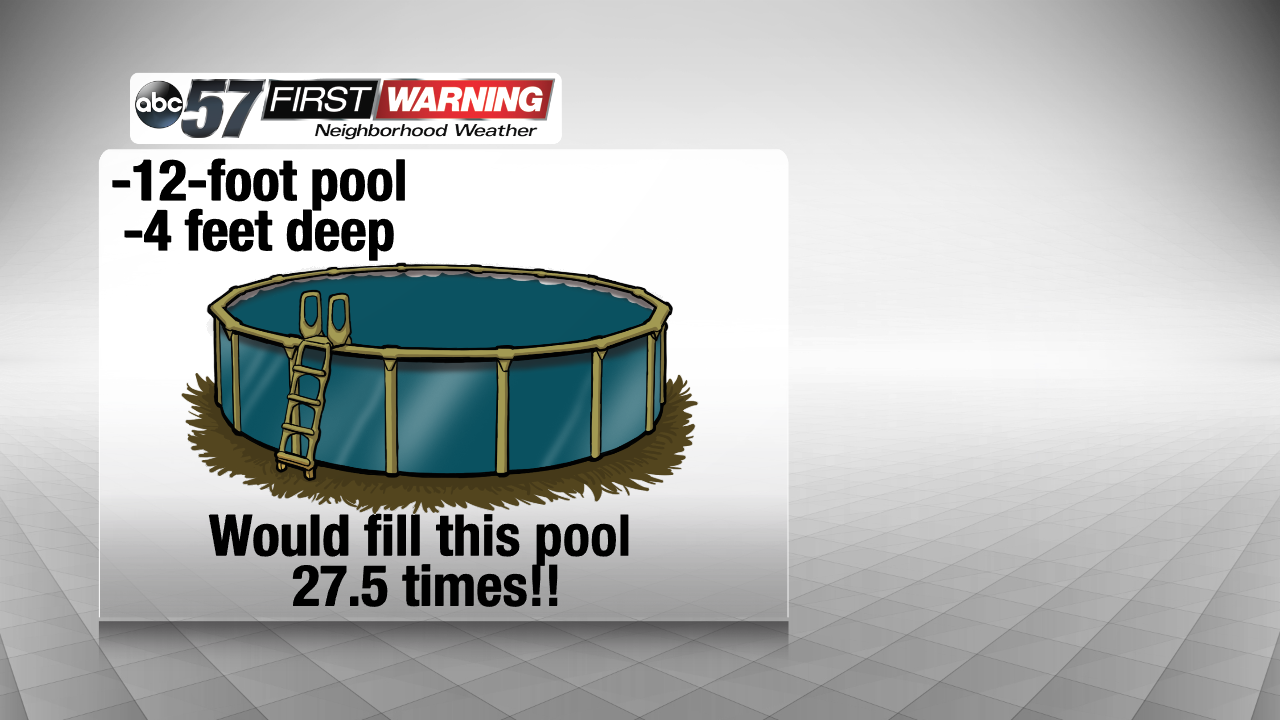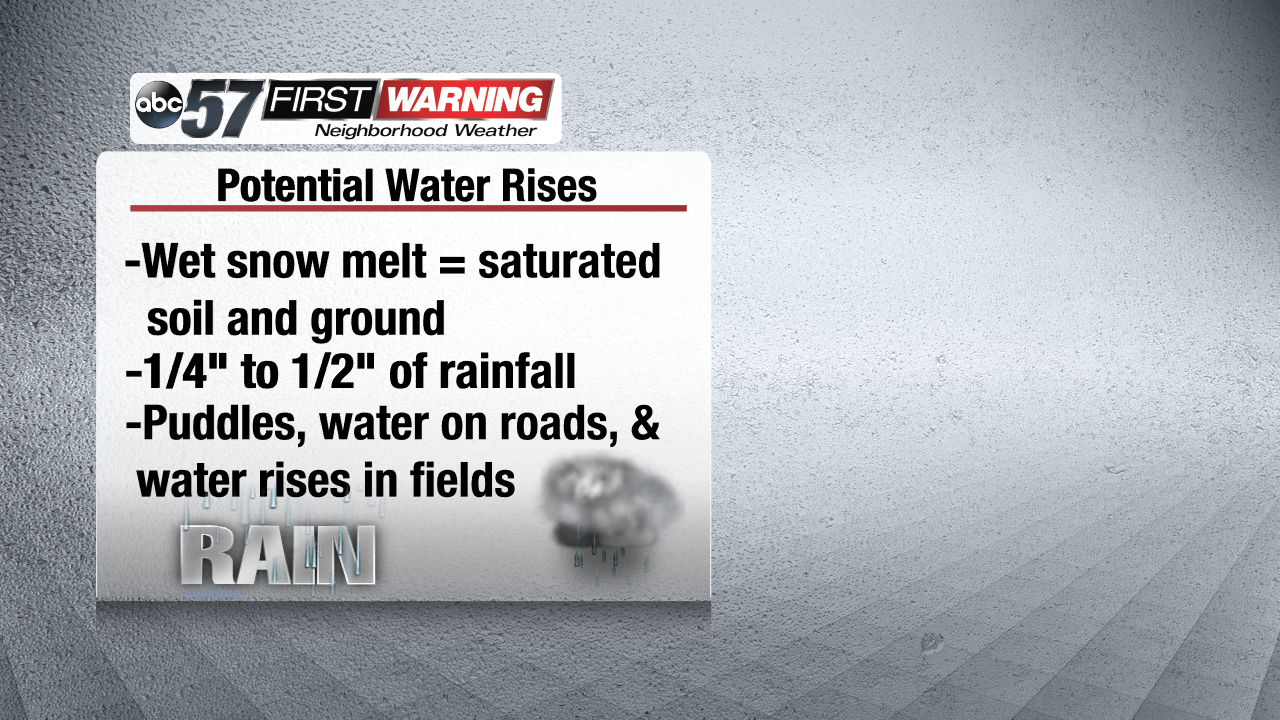How much water was actually in our snow pack?
Everyone is aware that we have seen quite a bit of snow over the last few weeks. And, we all know snow can be melted into its water equivalent. So, exactly how much water have we added to our ground across the area now that the snowfall has melted? Well, in short, quite a bit! The snow that was on the ground at the beginning of the week was slightly compacted due to how much was on the ground. It was also rather wet snow as temperatures rose above freezing.
Let's take a hypothetical situation to determine exactly how much water was in our snow. Let's assume you had a back yard that is roughly one-half of an acre in size, or 148 feet by 148 feet. If there was six inches of snowfall across your entire back yard, math tells us that there would be nearly 82,000 gallons of water in the ground underneath your yard! That's how much water was contained in the snow pack we had across the area!
Even more, that is enough water to fill a 12-foot diameter above-ground swimming pool that is four feet deep over 27 times! Yes, that is a lot of water! Gazing at your yard with six inches of snow covering it, you may not think there's actually that much water back there. But, if conditions are right, the snow can have very high water content. That was the case for Michiana's snow pack this week!
Of course, that water has to go somewhere since there isn't much evaporation occurring with the cloud and rain around the area. Also, there isn't much room in the ground as the soil is saturated across the region. As a result, many fields and low-lying yards are seeing standing water and puddles. Whatever water isn't in the ground, in a field, or in a yard is likely in a puddle on area roadways. Standing water will remain a concern through Friday and Saturday as more precipitation falls on the already saturated ground.That means hydroplaning will remain a concern, and as temperatures plummet, the water on roadways will freeze quickly and create hazardous conditions.

















